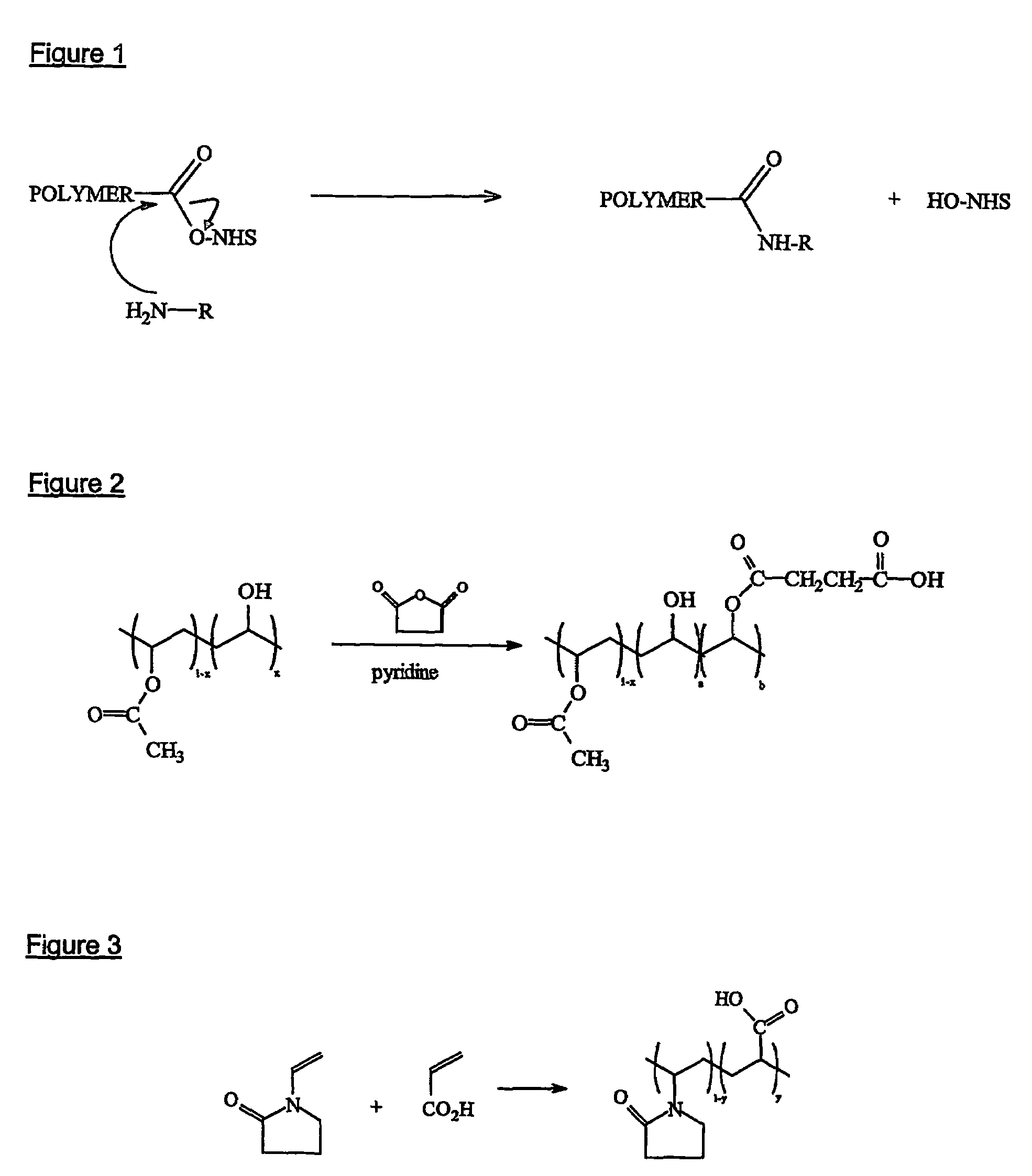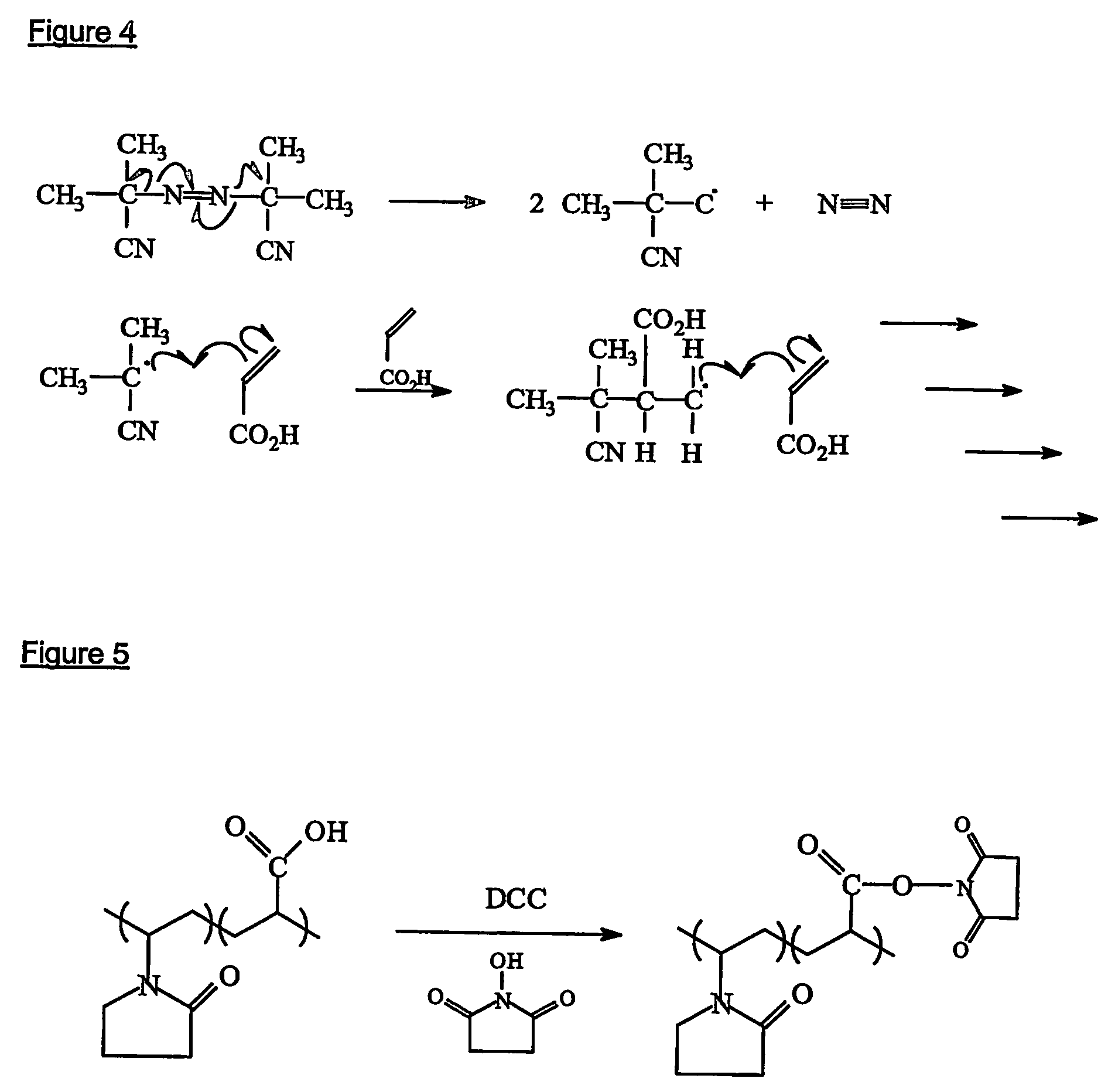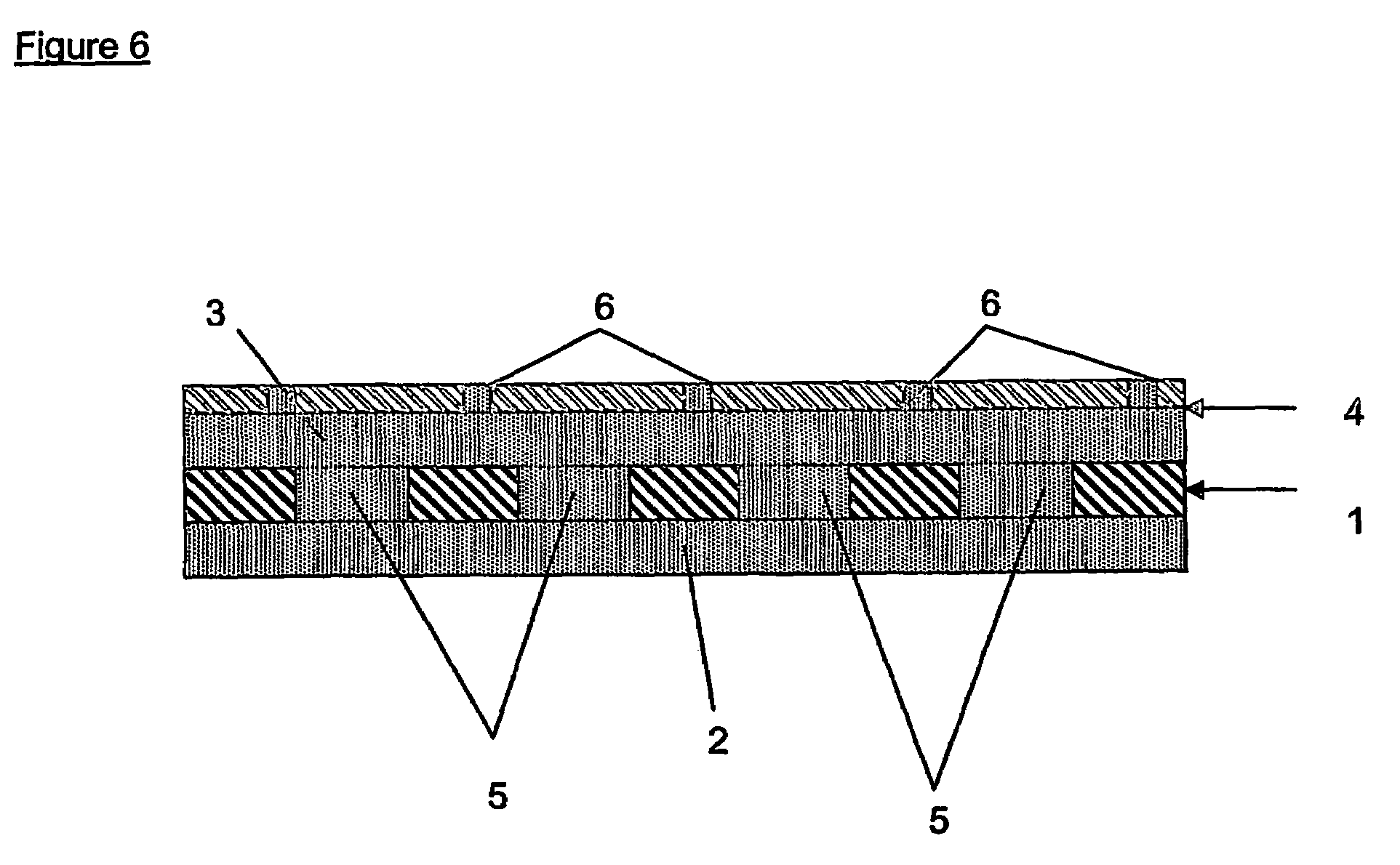Tissue-adhesive formulations
a technology of tissue adhesive and formulation, applied in the field of tissue adhesive formulation, can solve the problems of limited life of formulation, poor initial adhesion, and difficult application to the desired area of tissue, and achieve the effects of reducing or eliminating cracking and crumbling of tissue-reactive materials, good initial adhesion, and maintaining pliability and physical properties of suppor
- Summary
- Abstract
- Description
- Claims
- Application Information
AI Technical Summary
Benefits of technology
Problems solved by technology
Method used
Image
Examples
example 1
Synthesis of NHS-activated PVP-co-PAA
(a) Polymerisation of Acrylic Acid and N-vinyl-2-pyrrolidone
[0152]The polymer is formed via the polymerisation of monomers such as N-vinyl-2-pyrrolidone and acrylic acid, as shown in FIG. 3.
[0153]A number of methods may be used to initiate the polymerisation, such as free radical, ionic (cationic or anionic), thermal, UV, redox etc. Free radical polymerisation is the preferred polymerisation method and 2-2′-azo-bis-isobutyrynitrile (AIBN) is the preferred initiator. The AIBN decomposes into two radicals which can then attack the carbon-carbon double bond in the vinylic monomer (acrylic acid) as shown in FIG. 4.
[0154]This will continue until termination of chain growth, via combination, disproportionation etc.
[0155]The reaction solvent may be N,N′-dimethylformamide, toluene, or any other suitable solvent with a boiling point greater than 100° C. Toluene is the currently preferred solvent.
[0156]A typical polymerisation method is as follows:
[0157]So...
example 2
Alternative Synthesis of NHS-activated PVP-co-PAA
(a) Polymerisation
[0164]400ml of dried toluene is heated to 80±2° C. in a round bottomed flask using an oil bath or isomantle. Oxygen is removed from the solvent by bubbling oxygen-free nitrogen through the toluene for at least 30 minutes. 0.1 g (0.006 moles) of azo-iso-butyronitrile (AIBN) dissolved in 2 ml of toluene is added to the reaction flask using a syringe, immediately followed by 45.02 g (0.406 moles) of 1-vinyl-2-pyrrolidone and 7.02 g (0.092 moles) of acrylic acid. The reaction is left under nitrogen at 80±2° C. for 17 hours; the polymer is insoluble in toluene and forms a white precipitate as the reaction proceeds. After 17 hours, a further 0.1 g (0.006 moles) of AIBN is added and the reaction is kept at 80±2° C. for one further hour to polymerise any remaining monomer. The polymer is isolated by pouring into 2000 ml of rapidly stirred 1:1 hexane:diethyl ether and subsequent filtration using a 10-16 μm filter. The polymer...
example 3
Blending of NHS-activated PVP-co-PAA with Freeze-Dried Albumin
[0167]a) Powders of NHS-activated PVP80-co-PAA20 copolymers (ie copolymers consisting of 80 mol % vinyl pyrrolidone-derived units and 20 mol % acrylic acid-derived units) have been blended (in ratios of 1:1, 2:1 and 4:1) with freeze-dried porcine albumin (Sigma Aldrich; previously buffered to pH 10.5).[0168]b) Powders of NHS-activated PVP70-co-PAA30 copolymers (70 mol % vinyl pyrrolidone: 30mol % acrylic acid) have been blended (1:1) with freeze-dried human albumin (Baxter human albumin solution (20%) previously buffered to pH 10.5).[0169]c) Powders of NHS-activated PVP70co-PAA30 copolymers have been blended (2:1) with freeze-dried porcine albumin (previously buffered to pH 10.5).
PUM
| Property | Measurement | Unit |
|---|---|---|
| molar ratio | aaaaa | aaaaa |
| molar ratio | aaaaa | aaaaa |
| molar ratio | aaaaa | aaaaa |
Abstract
Description
Claims
Application Information
 Login to View More
Login to View More - R&D
- Intellectual Property
- Life Sciences
- Materials
- Tech Scout
- Unparalleled Data Quality
- Higher Quality Content
- 60% Fewer Hallucinations
Browse by: Latest US Patents, China's latest patents, Technical Efficacy Thesaurus, Application Domain, Technology Topic, Popular Technical Reports.
© 2025 PatSnap. All rights reserved.Legal|Privacy policy|Modern Slavery Act Transparency Statement|Sitemap|About US| Contact US: help@patsnap.com



